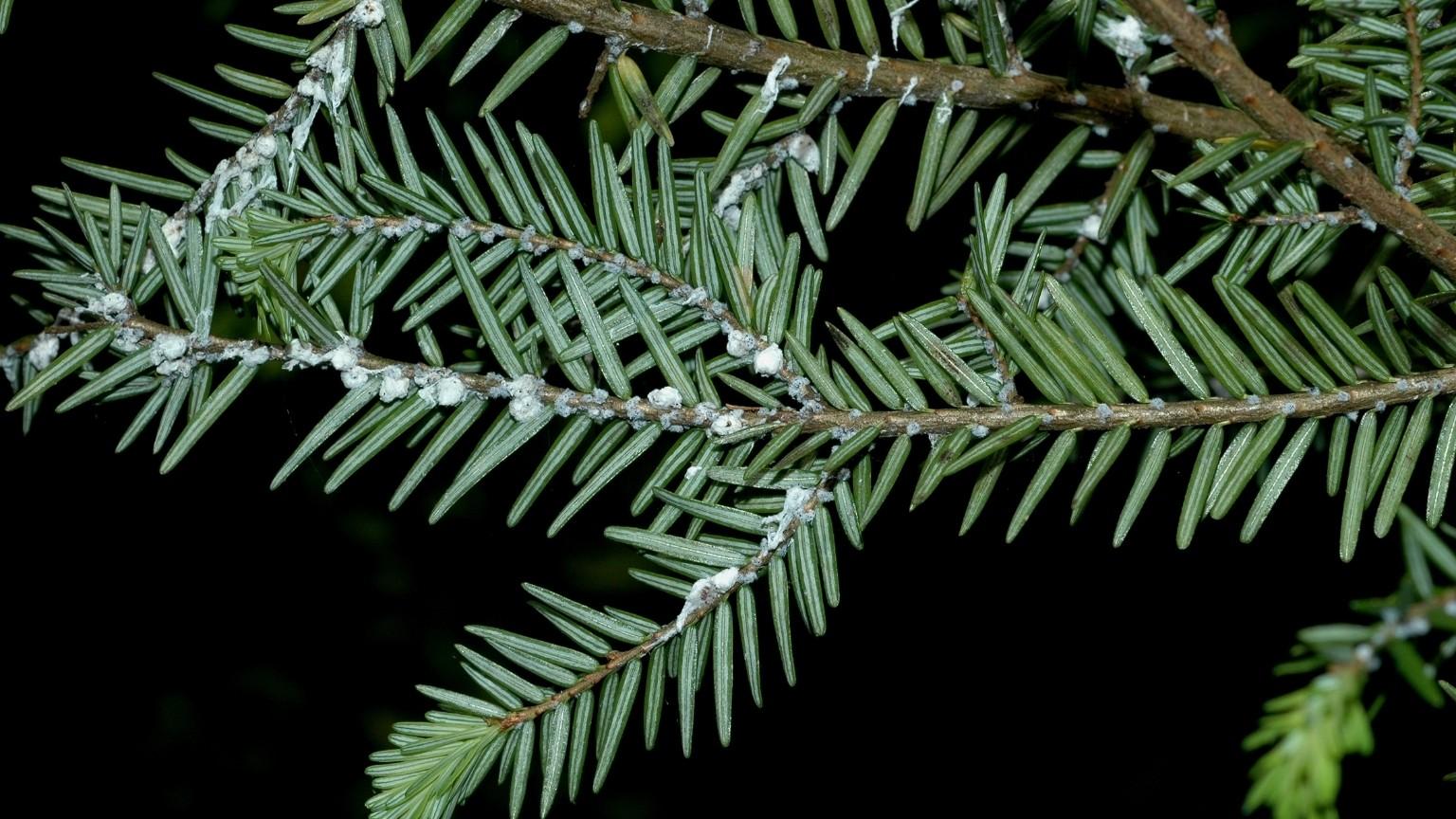Key points
- The hemlock woolly adelgid is a tiny, aphid-like insect that is a serious pest of hemlock in Maryland. It was originally introduced from Japan but is not a pest there. The adelgid ranges on the east coast from North Carolina to southern New England.
- In the eastern US, the adelgid has killed thousands of Eastern and Carolina hemlock in the past 50 years.
- Adelgids are found primarily on the young branches of mature hemlocks at the bases of the needles.
- They suck the sap from the branches and may inject a toxin into the tree during feeding.
- In heavy infestations, the feeding damage results in rapid desiccation and discoloration of the foliage.
- A heavily infested tree may die within four years.
Life cycle
- Adelgids overwinter as adults. In March and April they begin to lay brownish orange eggs underneath the body of the female which is covered with woolly white wax. In Maryland, the eggs hatch in April and May.
- The next life stage is the crawlers or immatures. They are reddish brown and are present throughout the summer. The crawler is the dispersal stage and is spread primarily on the wind but also by birds, forest animals, and humans during nursery, logging, and recreational activities.
- Upon finding a suitable place to feed the crawlers settle, generally on branch terminals at the bases of needles. The settled crawler is about 0.3 mm long, and is black with a white filamentous fringe around its outer perimeter and down the center of its back.
- As the young adelgids grow, they cover themselves with a white woolly wax. If the wool is removed the black color of the insect can be seen.
- They are all females and are about 2 mm when fully grown.
- There are two generations a year on hemlock in Maryland.
- All of the adults of the overwintering generation are wingless and remain on hemlock where they lay eggs the following spring.
- The subsequent spring generation produces mostly wingless adults that remain on hemlock. Some winged individuals may be produced.
Management
- If the top of the trees can be reached with a sprayer, trees can be treated with horticulture oil. A dormant rate of horticultural oil may be applied in February or early March before egg laying begins to kill adult females. Thorough coverage is essential to manage the pest
- In the summer, after all the eggs have hatched in mid-June, a thorough spray with a summer rate of horticultural oil or insecticidal soap will give good control. This spray targets the crawlers.
- If trees are large and in situations where there are tight clumps of trees, or if the trees or branches are inaccessible, spraying may not give adequate control. Contacting an arborist is recommended. Imidacloprid and dinotefuran are effective treatments. These belong to a class of insecticides called neonicotinoids which cannot be applied by homeowners, as per the Maryland Pollinator Protection Act.
- Research has shown that excess nitrogen may enhance adelgid populations on hemlock. So, it is advisable not to fertilize hemlocks.
- The U.S. National Arboretum has a breeding program developing interspecific hybrids resistant to HWA. https://www.usna.usda.gov/assets/images/as_pdf_image/Tsuga_Traveler.pdf
Rev. 2020
